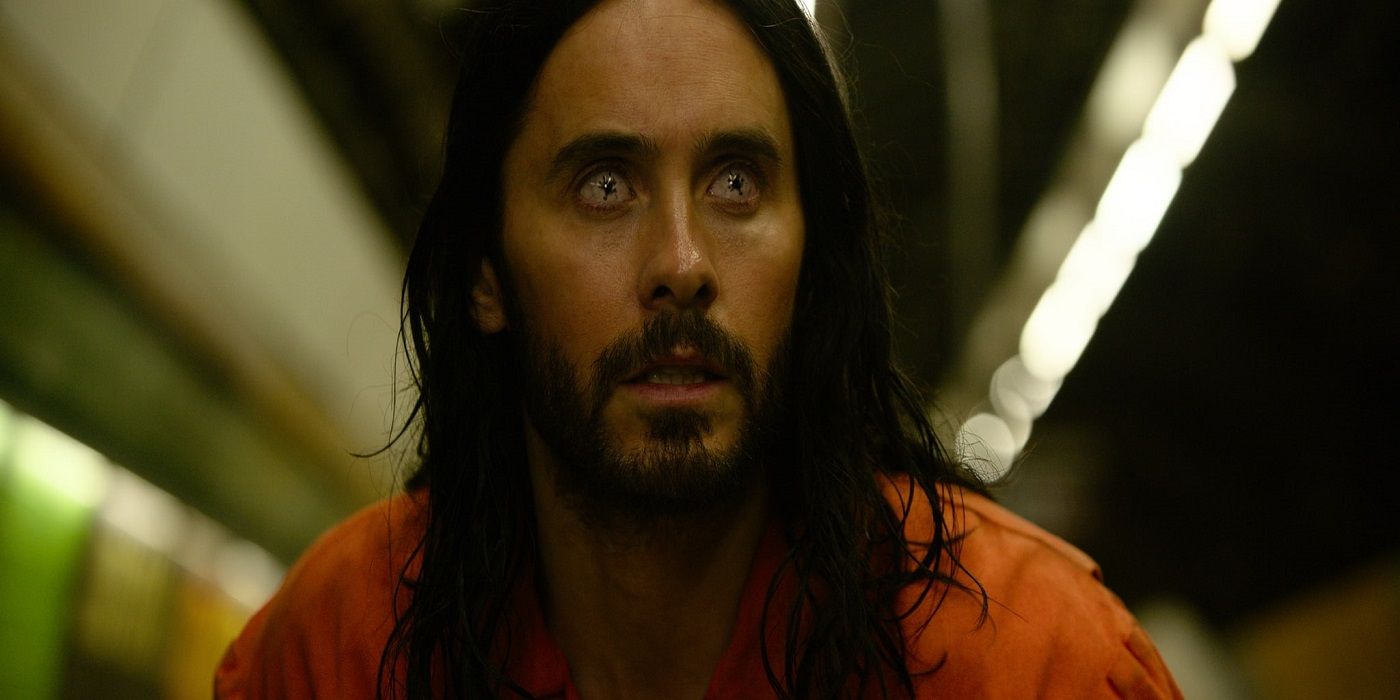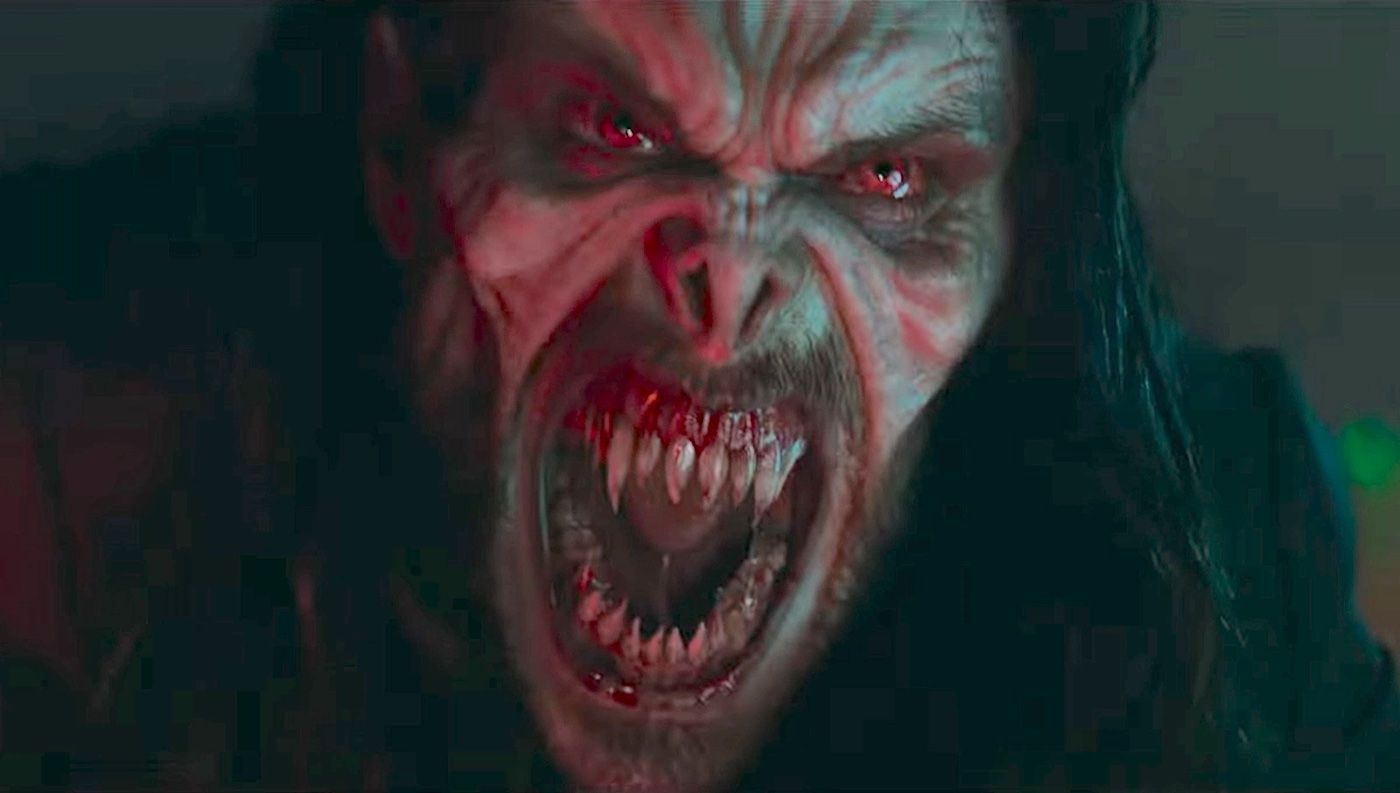This past April, Sony Pictures released their latest foray into the superhero genre with Morbius, led by Oscar-winner Jared Leto in the titular role. The movie follows Dr. Morbius, a renowned doctor specializing in rare blood diseases. His research is driven by his own rare blood disorder, and he makes a risky gamble in his research to prevent others from facing the same fate. But what might have been a promising venture instead unleashes the doctor's internal darkness as he fights new and mysterious urges.
Morbius was eviscerated by critics and fans alike, breaking a steady flow of success for Sony. Despite the flaws in its storytelling, Morbius managed to excel in one area: its visual effects. Award-winning VFX studio, Digital Domain, was tapped by Sony to help elevate the movie-watching experience. Now, Digital Domain has released a special VFX breakdown video on how the team utilized innovative technology. The video offers insight into how the VFX team helped craft Leto's and Matt Smith's vampiric looks and their powers, as well brief breakdowns of various locations and action sequences.
“Our digital human team is creating technology that makes it possible for visual effects to expand storytelling in ways that just weren’t possible even a few years ago, while also enhancing the performances of the talent on screen,” said John Fragomeni, global president of Digital Domain. “As the primary VFX vendor on Morbius, we’ve been working closely with both the stars and filmmakers, and that has given us the freedom to really iterate on the designs and push the technology.”
One of the major goals of Digital Domain was to avoid relying on prosthetics or makeup to create the looks of the characters, instead turning to facial capture software similar to that used for Thanos in the Avengers' movies. Once the team finalized how each character would look, the actors performed their scenes live on set, along with providing a full range of facial expressions and movements. After principal photography wrapped, several scenes were re-shot on a motion capture stage, allowing director Daniel Espinosa to readjust and fine-tune performances as needed. When all data was secured, artists made additional adjustments to match the CGI with actors' performances. Digital Domain also created multiple variations of Morbius.
About facial capture system Masquerade, Digital Domain's Matthew Butler, production visual effects' supervisor on Morbius, said:
"Masquerade is in a class of its own, and it gives filmmakers the ability to create better CG faces faster, without sacrificing the nuance and subtlety of the actor’s performance. It was already the most advanced tool of its kind when Digital Domain’s Digital Human Group developed it to create Thanos, and the version we used on 'Morbius' is at least a generation more advanced.”
But what's a vampire without his powers? In addition to the physical appearance of the vampires, Digital Domain developed the superpower effects. Speed and fight sequences largely used animated character doubles that were created after a two-week-long motion capture session with the main actors and stunt people. Additional details to a character's powers were added by the company's artists, with specific actions receiving their own effect. To further enhance how the powers would translate to the screen, Digital Domain grounded their tech in physics.
Joel Behrens, Digital Domain VFX supervisor, said:
“Although the world of 'Morbius' highlights the incredible powers of the characters, we constantly tried to ensure that everything was grounded in a consistent logic. The vampiric powers on display are meant to make audiences accept the impossible, but there was a firm set of rules we adhered to in order to make the action sequences look and feel like they belonged in that world. The results are both spectacular and immersive, and we’re excited to see how audiences react.”
Finally, to create the action sequences, Digital Domain used both practical and physical sets with visual CG extensions and additions. Artists based their designs on existing and real-world locations. For the final sequence, Digital Domain was able to virtually unite the filmmakers through a software that allowed them to upload the CG assets and provide VR set scouting. At Digital Domain's mocap studio, performers would act as stand-ins with their body capture and other camera data being streamed so that Espinosa and the other filmmakers could direct, examine the scene, and establish camera angles and blocking prior to shooting, which helped utilize their production time.
As of June 3, Morbius is once more in theaters and will soon be available for digital purchase. Morbius will receive a 4K Ultra HD, Blu-ray, and DVD release on June 14. Check out the VFX breakdown video below:


